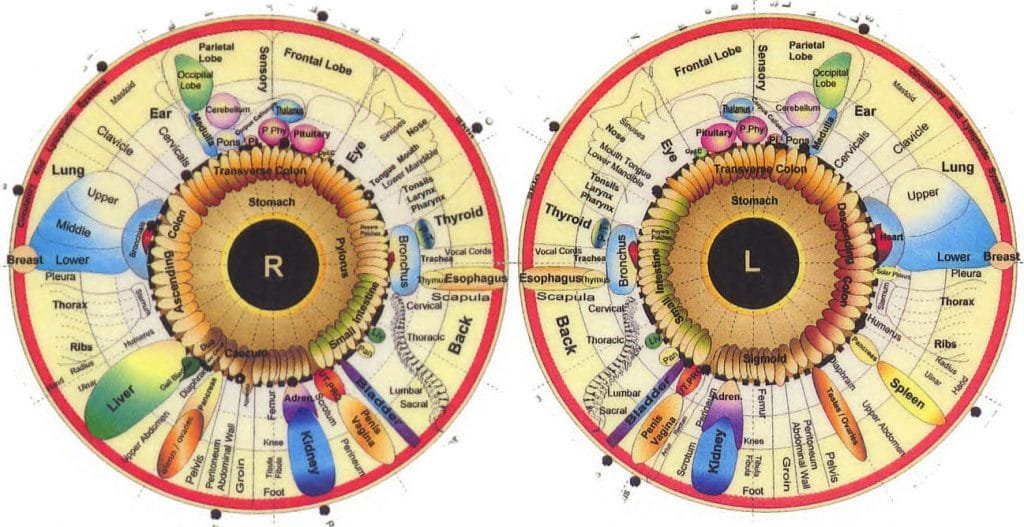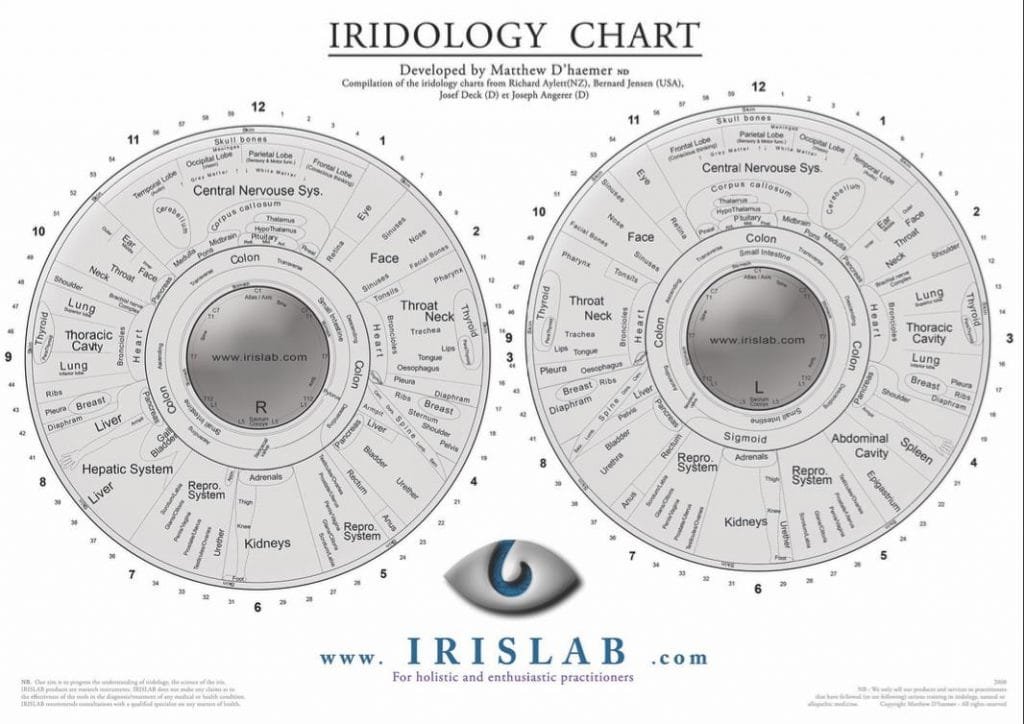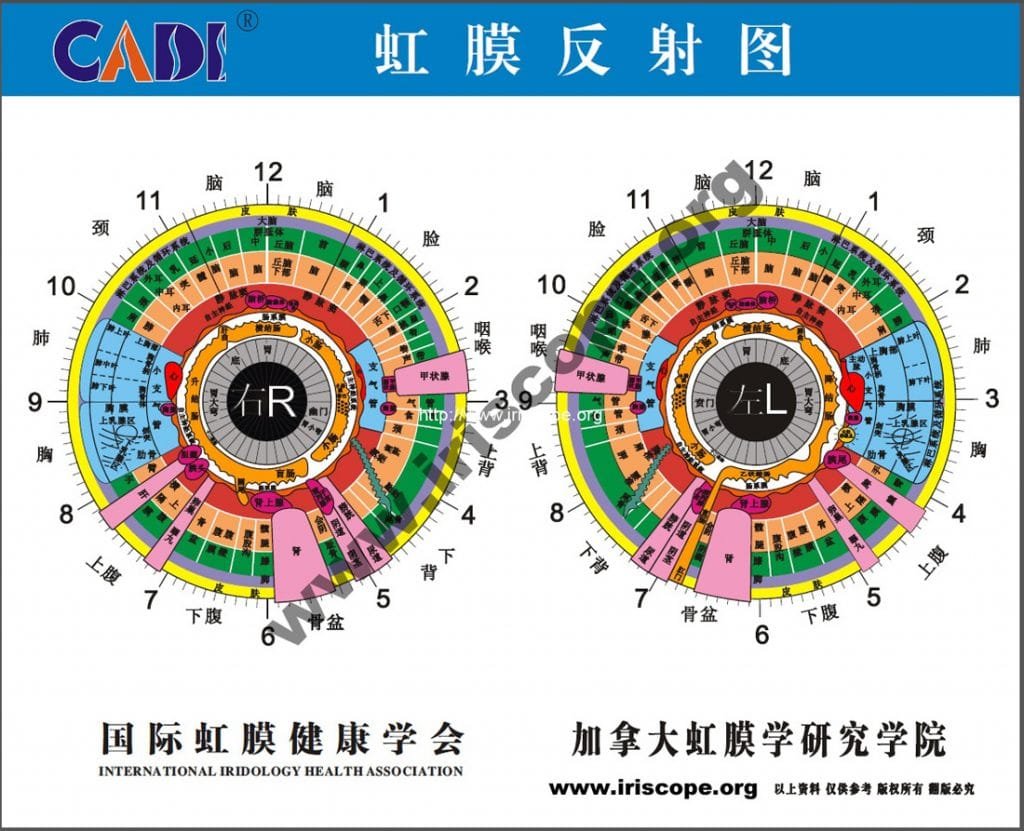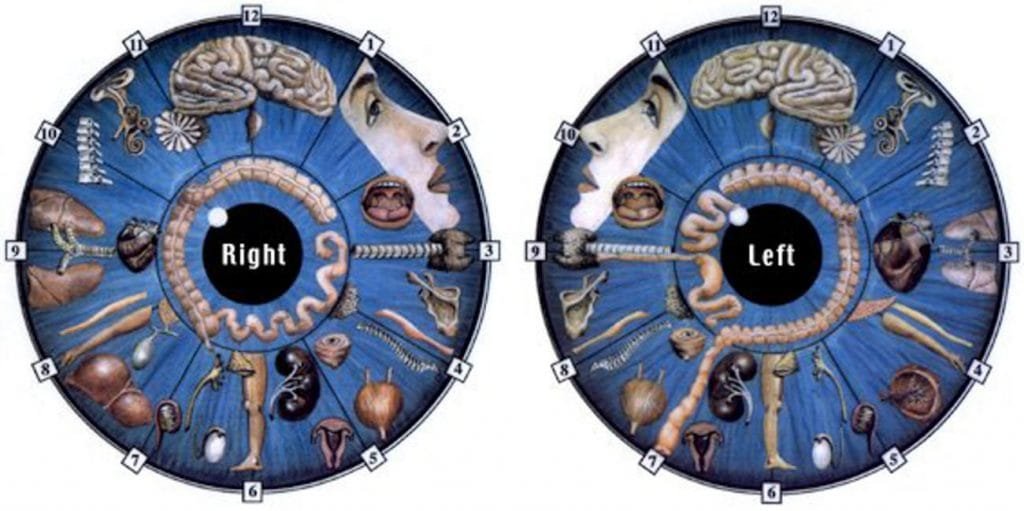What is iridology chart ?

iridology chart how to read

iridology chart how to read

iridology chart how to read

iridology chart how to read

iridology chart how to read

iridology chart how to read

iridology chart how to read

iridology chart how to read

iridology chart how to read

iridology chart how to read

iridology chart how to read


iridology chart how to read

iridology chart how to read
What is iridology?
WHAT IS IRIDOLOGY ?-When people are asked what they look at first when they notice an attractive person, several answers come to mind; some say they notice how a person walks or what a person is wearing. Some notice the perfume or cologne they wear, some take notice of the type of body, or the color and style of hair. However a great proportion of people notice the eyes of a person, for the eyes are often described as the windows to our soul. When we look at people’s eyes, we can often determine whether people are lying, whether they are angry or whether they are in love. We often can tell whether people are tired or not feeling well because the eyes will appear dull or lack the usual sparkle when people are not in the best of health. The eye is not only the window to our soul; the eye is a map to our body.
iridology reading chart
iridology how to read eyes
how to read iridology eye charts
iridology chart how to read
Iridology or iris diagnosis as it is often called is a method used in alternative medicine to analyze the health status by studying colors, marks and signs in the iris, pupil, and sclera of the eye.
Have you ever noticed that there often appear clouds or marks in the iris of your eyes and these often change depending on your state of health or age? Have you noticed that your left eye is different than your right eye? If you have, congratulations, as many people believe that their eye color remains the same all of their lives.
After studying thousands and thousands of irises in great detail over many years, I have had the opportunity to notice these changes in the irises, pupils, and sclera of eyes and have come to the conclusion that what is revealed in the eyes, mirrors the state of health of our entire body. That is right, the iris of the eye is actually a map where each place represents a different body organ or system.

How did iridology start?
Iridology dates back hundreds of years, but the first iris map developed was in the early 1800’s by a doctor named Ignatz von Pezcely in Hungary. He is known as the father of iridology. In his childhood it is written that he captured an injured owl in his backyard that had a broken leg. He noticed in one of its eyes that there was a black line but when the leg healed, a white mark appeared where the dark mark was. This incident started a life-long interest and study of iridology. Since then, many scientists, doctors, and health professionals around the world have studied iridology. Iridology is taught in countries like America, Australia, Germany, and Russia, where even modern medicine has begun to take notice.
A career in Iridology
Many medical doctors, healers, natural therapists and laypeople have decided for a career in Iridology. Iridologists are in great demand all over the world as patients are increasingly searching for alternative ways to find the causes of their health problems. Modern medicine unfortunately has its limitations and many diagnostic techniques such as blood tests and x-rays are often painful, invasive and carry with them a certain degree of risk. An Iridology examination is an absolutely safe, non-invasive, painless and reliable method of obtaining information about the health status of an individual and one of the few real methods to view all the body organs and systems as a whole and how they interact with each other. In recent years Iridology and natural medicine have shown unbelievable growth as a career option the world over. The potential is fantastic and Iridology in combination with other natural healing methods such as Nutrition, Homeopathy, Herbal Medicine or vitamin and mineral therapy is providing an effective solution to the growing rate of chronic health problems.
iridology chart how to read?
Blue-Eyed Type (German: Lymphatic)
Description-White collaret (autonomic nerve wreath), solid blue or gray/blue color with no discoloration or psora (pigments). Related to the primary color blue and the spiritual aspect of health. Strong tendency towards Western phlegmatic (water) constitution and Chinese water, metal constitutions.
Tendencies
This is the “pure” blue eye that is found in people’s of European descent. It usually accompanies a classic phlegmatic disposition, which means the person is prone to lymphatic disturbances and catarrh afflictions. This is probably due in part to the fact that people of European descent are frequently heavy consumers of dairy products. Blue-eyed people are also thought to have a greater tendency to accumulate uric acid in their bodies and to have kidney troubles. The body systems and parts that these people have to pay particular attention to are the following: Mucus membrane areas (upper respiratory tract, bronchioles, villi of lungs, digestive tract and the uro-genital tracts), lymphatic tissues (tonsils, appendix, spleen and lymph nodes) and membranes of the joints.
Health problems commonly found in people with the lymphatic constitution include the following: Sinus troubles, sore throats, tonsillitis, earaches, bronchitis, asthma, swollen lymph nodes, skin catarrh (eczema and dandruff), kidney weakness, arthritis and rheumatism.

Mixed-Eyed Type (German: Biliary)
Description-Discolorations or psora (drug spots) on top of a blue background (fiber structure is visible through color). Related to the primary color yellow and the mental aspect of health. Strong tendency towards Chinese wood, earth constitutions and the Western air constitution.
Tendencies
The blue/brown mixed eye has been linked by Iridologists with a disposition to biliary or hepatic (liver) troubles. It is believed that the colorations on top of the blue eye are a sign of toxicity in the body due to digestive problems. When the pigmentation is concentrated around the center of the eye, this is especially linked with digestive disturbances. Problems with the liver and other digestive organs can lead to further imbalances in the glandular and circulatory systems. Body systems and organs to pay particular attention to are as follows: The digestive system (stomach, pancreas, gall bladder and especially the liver) and the intestinal tract.
Common health problems Iridologists associate with this type are: Hypoglycemia, PMS, indigestion, gallstones, constipation, gas, toxicity of the digestive tract, anger and/or depression, difficulty getting to sleep followed by difficulty waking up in the morning, nausea, stiffness and achiness, headaches (especially migraines), food allergies, seasonal allergies and Candida.

Colors
Colors have strong meaning in this eye type:
Straw Yellow: Relates to the kidneys and suggests poor kidney function.
Neon Orange: Relates to the pancreas and suggests a tendency to blood sugar imbalances and problems with digesting (metabolizing) carbohydrates.
Dirty Orange: May relate to either the pancreas or the gallbladder. Suggests some tendency as neon orange, but may also suggest gall bladder problems. Look for other signs of gall bladder problems (marks in gallbladder zone or fatty deposits in whites.)
Dark Brown: Related to liver function.
Reddish Brown: Suggests breakdown of the blood and a need to work with blood purification and building. Possible problems with liver, spleen, and bone marrow.
Brown Eyed Type (German: Hematogenic)
Description-Pure brown eye with pigments covering iris fiber structure. Related to the primary color red and the physical aspect of health. Probably Chinese constitutional types: fire and earth. Probability related to Western fire and earth constitutions as well.
Tendencies
Pure brown eyes are difficult for Iridologists to read because a layer of pigment completely covers up the fiber structure of the eye. However, Iridologists have noted some general characteristics of brown-eyed people. First, they appear to be pre-disposed to imbalances in blood composition and hence to blood disorders. It has been suggested that they have a possible inherent inability to store adequate supplies of minerals. They may especially have problems with calcium metabolism. Specific systems and organs to pay particular attention to are: The circulatory system (heart, blood, blood vessels), the organs that make blood (liver, spleen, bone marrow), the digestive system and the endocrine glands.
Common health problems experienced by brown-eyed people include: Anemia, hardening of the arteries, all types of blood diseases, constriction and hardening of lymph tissue, possible reduced leukocytes in the blood, digestive troubles, mineral deficiencies and early breakdown of the endocrine glands.



























